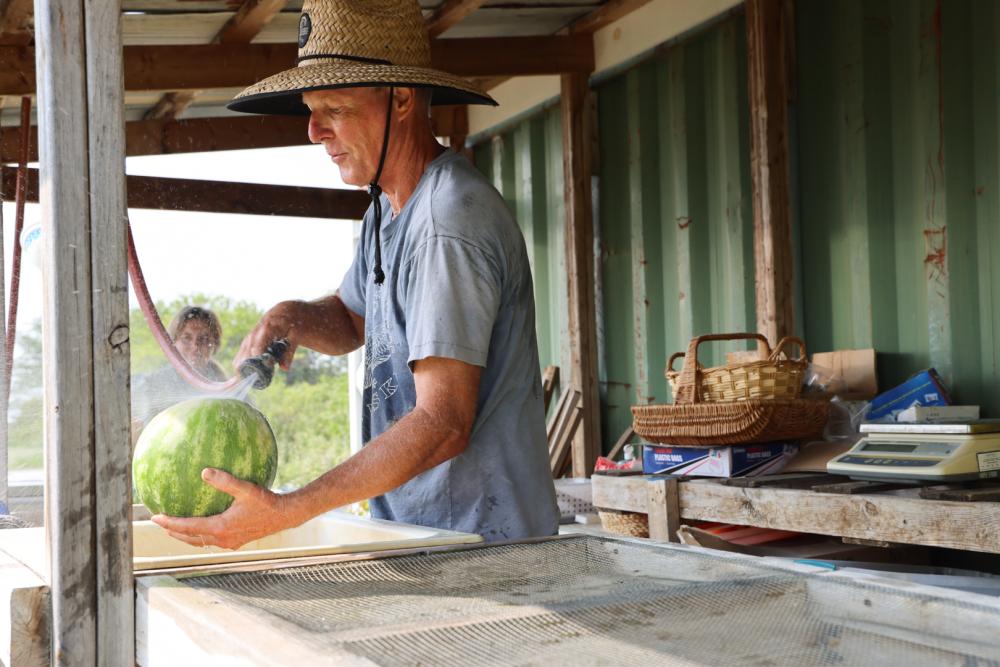
Personal observations are often obscure to the facts. For instance, recently I worked at a booth at Husker Harvest Days. The booth focused on rural community development. My observations were that many of the agricultural producers decided to not stop at our booth or for those who did stop, conversations showed a disconnect of the importance of their local community to their farm operations. Similarly, when working with communities, I have observed the lack of understanding of the importance of the agricultural producers to the local community’s well-being. Why the disconnect between these two very important components of our rural regions? Were my observations incorrect? According to research studies conducted in three different countries, that answer is both a yes and a no.
Study Observations
Following are brief summaries of the research studies conducted in three different countries -- Germany, Australia, and the United States. Although similar in subject, the three studies were very different. However, the observations were similar -- there is a correlation between the agricultural community and their local community well-being.
In Germany, researchers Bunkus, Soliev, and Theesfeld (2020) studied the density of resident farmers and rural inhabitants’ relationship to agriculture. Findings suggest that a higher density of farmers who reside within a rural community can positively influence the perceptions of non-farming rural community members toward agriculture and their attachment to their rural place. Additionally, the social interactions of the producers can help mitigate positive or negative experiences the non-farming residents have had about farming and change their perceptions formed through media messaging. Researchers found that if the density of resident farmers went up by one unit, the strength of non-farming community members’ relationship to agricultural also increased. Researchers also concluded that increases in farm concentration would result in decreases of this same relationship, supporting earlier research by Lobao and Stofferahn (2008) that an increase in industrialized farmers can lead to deterioration of socioeconomic well-being, social fabric, and environment.
Australian researchers McManus et al. (2012) studied the relationship between farmers and rural communities, looking at how interactions may help to maintain rural populations, services, and the local economy and environment. In reference to two communities in “deep” rural Australia, the researchers found that ongoing, informal socialization of farmers with their local community is critical for both the farmers and the community. The researchers suggest that as farmers adapt to changing business circumstances (consolidation, drought, less farm population) the local communities also adapt. Communities are places where the farmers can connect, offer and seek support, and enhance their sense of belongingness. This is especially important in helping farmers endure environmental and economic hardships. In turn, farmers help the community maintain resiliency through their willingness and ability to actively participate in the community’s economic and social fabric.
The final study cited in this article was conducted by Park and Deller (2021). The researchers used multiple variables, farm size (measured by acres and sales) and farm ownership structures in relationship to community well-being. In looking at farm trends, they found that over the past 30 years there has been a 19.9 percent decrease in mid to mid-large-sized farms (50-999 acres) in the United States. The larger farms (>1000 acres) stayed relatively the same and the biggest growth was in small farms. In 1987, small farms (<50 acres) accounted for 28.7 percent of the farm population compared to 41.9 percent in 2017. When comparing farms sales of various types of agricultural commodities, researchers found the same pattern. They termed these changes to result in a “hollowing out” of the mid-size farms (p. 303).
How do these structural changes in farm size and sales impact community well-being? The results are mixed. Well-being, as measured by multiple indexes such as age, income, economic diversity, social capital, and employment varied in relationship to farm dependency. Findings show:
- The concentration of farms with sales over $5K per one thousand persons, has a statistically negative weak association with earnings per job.
- Farms with sales over $500K were positively associated with higher earnings per job, however, they were also associated with higher poverty rates and lower homeownership rates.
- Farms with sales over $500K were positively associated with reduced renter financial stress and better health outcomes. However, there was a lower rate of new business formations.
Farm ownership characteristics were studied in relationship to community well-being. The study found that:
- With a higher percentage of individuals classified as primarily farmers, community well-being was more positive. Outcomes included higher earnings per job, lower rates of rental financial stress, and better health outcomes.
- Similarly, a higher percentage of part-time farmers had positive associations with community well-being. However, there was a lower rate of homeownership and business startup rates.
Comparatively, the researchers found that absentee farmers, those who are not living on the farm have a direct correlation to community well-being. “As the share of farmers that do not live on the farm increases, earnings per job decline, poverty rates increase, homeownership rates decline, and business startup rates also decline” (p 311).
Summary
The three different studies from three different countries indicate an overall positive association between the producers and their local communities, except for absentee farm ownership. Larger farms may yield higher levels of income for the farmers and increased wages for their employees. Additionally, opportunities exist with the growing number of smaller farms. These producers may provide secondary or supplemental income from either off-farm employment or urban sales. This too contributes to the economic wealth and well-being of a community. The relationship between agricultural producers and their communities remains strong, even in the face of structural changes. Recognizing this relationship from both the perspective of the producer and community can lead to better decisions and policies that positively impact both groups.